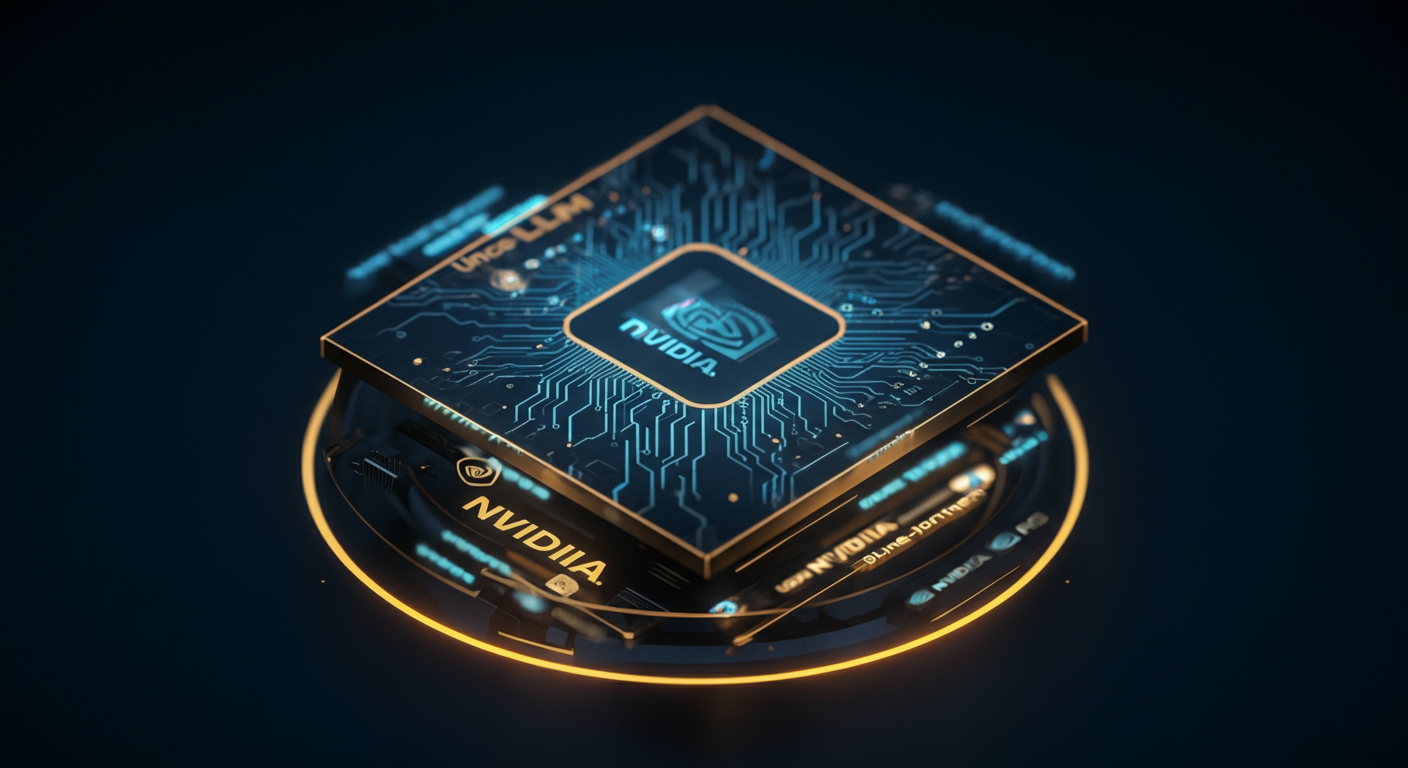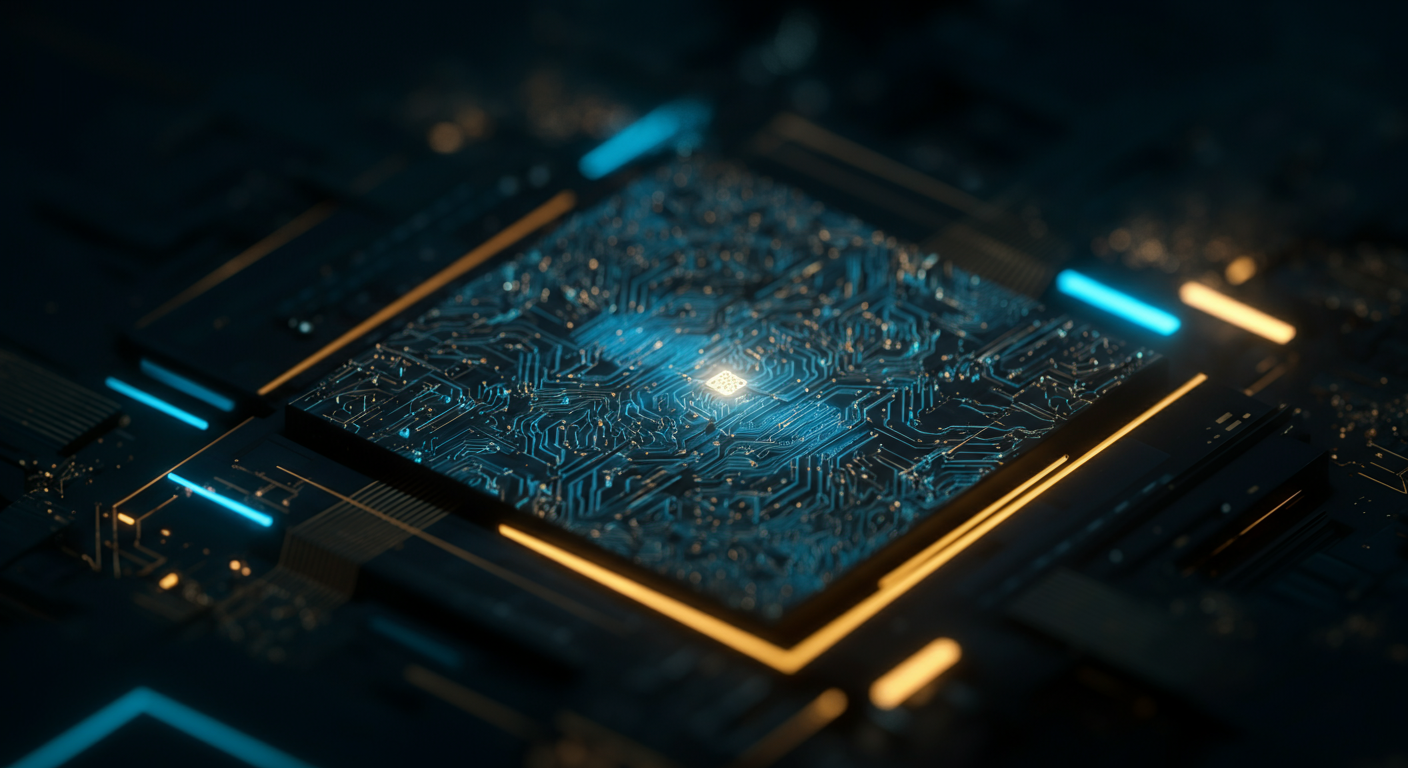Building Adaptive AI: Persistent Memory, Personalized Agents, and the Art of Forgetting

Here's how adaptive AI is shaping the future, one memory at a time.
The Quest for Lifelong Learning in AI: Why Persistent Memory Matters
Traditional AI struggles to retain and apply knowledge consistently over time, hindering its ability to learn in a truly "lifelong" manner. This is where persistent memory (PM) comes in, offering a crucial upgrade for agentic AI.
What is Persistent Memory?
Unlike standard memory, which is often volatile or short-term, persistent memory allows AI agents to:
- Store knowledge long-term: Think of it like a digital brain that doesn't forget.
- Adapt to new information: PM enables continuous learning and refinement of existing knowledge.
- Personalize interactions: By remembering past interactions, AI can tailor responses to individual users, leading to enhanced personalization.
Architectures of Persistence
Several architectures are emerging as frontrunners in persistent memory AI applications:
- Knowledge Graphs: Represent knowledge as interconnected entities and relationships.
- Vector Databases: Store and retrieve information based on semantic similarity, enabling efficient long-term memory.
- Semantic Networks: Similar to knowledge graphs, but with a stronger emphasis on hierarchical relationships.
Use Cases and Examples
AI lifelong learning systems powered by persistent memory are already making waves:
- Financial Modeling: Adapt models to changing market conditions based on historical data.
- Medical Diagnosis: Improve diagnostic accuracy by continuously learning from new medical research and patient data.
- Custom Education: Provide personalized learning experiences that adapt to each student's progress and learning style.
The Path Forward
Persistent memory isn't just a technological upgrade, it's a paradigm shift that propels AI toward more human-like learning capabilities. As we continue to develop more robust AI lifelong learning systems, expect agents that can truly adapt, personalize, and solve problems in dynamic, real-world environments. Let's now explore how we compare different implementations of persistent memory.
Agentic AI: Unleashing Personalized Experiences Through Memory
Agentic AI is revolutionizing how we interact with technology, offering experiences tailored to our individual needs and preferences.
Defining Agentic AI
Agentic AI goes beyond simple automation, creating systems that can perceive their environment, make decisions, and take actions to achieve specific goals. Think of it as a digital assistant that learns and adapts to your unique work style.- Agentic AI systems can offer personalized recommendations.
- They can proactively manage tasks.
- They create adaptive interfaces.
The Power of Persistent Memory
Persistent memory is crucial for agentic AI, allowing systems to retain information about user interactions and preferences over time. Without it, agents would be stuck in a perpetual state of amnesia, unable to learn from past experiences.Persistent memory enables agents to evolve, offering ever-improving, highly relevant assistance.
Building Personalized Agents
Here are some of the techniques used in building personalized AI agents:- Reinforcement Learning with Memory: Agents learn through trial and error, storing successful strategies for future use.
- User Profiling: Creating detailed profiles of individual users based on their behavior and preferences.
- Adaptive Interfaces: Interfaces adjust dynamically to suit the user's skill level and goals. For example, a design AI tool might offer different feature sets to a beginner versus a professional.
Privacy and Ethical Considerations
The personalization capabilities of agentic AI bring real concerns. Balancing user experience with privacy is a must. Transparency, fairness, and data security must be paramount when building personalized AI agents.Mitigating Bias
One of the major challenges in building personalized agentic AI is mitigating algorithmic bias. If training data reflects existing societal biases, the agent may perpetuate them, leading to unfair outcomes. Data diversity and ongoing monitoring are essential.In conclusion, agentic AI promises unprecedented levels of personalization, but it's important that we address privacy and ethical issues to fully realize its transformative potential. Next, we'll explore the art of 'forgetting' in AI.
The art of forgetting is surprisingly vital when building truly intelligent systems.
The Necessity of Forgetting
Cognitive science highlights that forgetting isn't a flaw, but a feature; efficient information processing depends on it."The value of an education… is not the learning of many facts, but the training of the mind to think something that cannot be learned from textbooks." – Albert Einstein
Forgetting prevents information overload and helps in:
- Generalization: Allows AI to focus on essential patterns rather than memorizing every detail.
- Adaptability: Enables AI to quickly learn new information by discarding outdated or irrelevant data.
Implementing Decay Mechanisms
We can mimic this natural forgetting using different decay mechanisms in AI memory:- Time-based decay: Older memories fade over time. Imagine setting a timer on information, much like setting up automatic marketing.
- Relevance-based decay: Memories decay based on their importance or connection to current tasks. Think of this as relevance based memory decay, where less relevant memories are pruned.
- Usage-based decay: Infrequently used memories are gradually forgotten. A bit like clearing your browser cache.
Managing Decay for Optimal Performance
Effective decay management enhances AI adaptability and prevents stagnation. Techniques include:- Thresholding: Setting a minimum relevance score; memories below the threshold are discarded.
- Probabilistic forgetting: Randomly forgetting memories based on certain probabilities.
- Reinforcement learning for memory management: Training AI to strategically forget information, optimizing for long-term performance, not unlike q-learning
Here's how AI can learn to learn better, just like us.
Self-Evaluation: Refining AI Through Introspection and Feedback
In the quest to build robust and reliable AI systems, self-evaluation emerges as a critical capability. It's not enough for AI to simply perform tasks; it must also assess its own performance and identify areas for improvement.
Methods for Self-Evaluation
How can AI look in the mirror, so to speak? Here are a few techniques:- Internal Consistency Checks: Examining the coherence and logical flow of its reasoning process.
- Performance Monitoring: Tracking metrics like accuracy, speed, and resource utilization to identify deviations from expected behavior.
- Error Analysis: Delving into mistakes to pinpoint the root causes of failures and inform targeted learning strategies. Metrics for evaluating the quality of this analysis are crucial.
Feedback Loops and Learning
But evaluation alone is just half the battle. AI must also leverage feedback to enhance its capabilities:- Reinforcement Learning: Learning through trial and error, optimizing actions based on rewards and penalties.
- Imitation Learning: Observing and mimicking expert behavior to acquire new skills and strategies.
- Active Learning: Strategically selecting the most informative data points for training, maximizing learning efficiency.
Building Self-Aware AI

The ultimate goal? Building self aware AI, systems that understand their limitations and can proactively seek guidance or adapt their approach. This presents both tremendous opportunities and significant challenges, demanding careful consideration of ethical implications.
In summary, AI self-evaluation techniques and the intelligent use of feedback are vital for creating adaptable and trustworthy AI. As we push the boundaries of AI, introspection will be key to unlocking its full potential. Next, let's consider the importance of continual learning in AI development.
Architecting the Future: A Holistic Approach to Persistent, Personalized, and Self-Improving AI
Adaptive AI is no longer a futuristic fantasy; it's the next evolutionary leap, poised to redefine human-machine interaction.
A Unified Approach

Rather than isolated components, envision a cohesive adaptive AI system architecture where each element amplifies the others:
- Persistent Memory: Imagine AI that remembers not just recent interactions but your entire history, preferences, and learning journey.
- Personalized Agents: These agents aren't generic; they are bespoke creations tailored to your unique needs, like a digital assistant that evolves with you.
- Decay Mechanisms: The art of forgetting is crucial. An effective system intelligently discards irrelevant information, maintaining focus and efficiency.
- Self-Evaluation: Built-in mechanisms to assess performance, identify areas for improvement, and autonomously refine strategies.
Design Considerations
Scalability, efficiency, robustness, and security are paramount. These systems must handle growing data volumes, adapt to diverse environments, withstand adversarial attacks, and protect user privacy. Hardware considerations, including those required for persistent memory, become critical to the design of adaptive AI system architecture.Real-World Applications & Future Trends
From personalized healthcare to adaptive cybersecurity (like those found in Multi-Agent Systems for Cyber Defense: A Proactive Revolution), adaptive AI is making its mark. As for future trends in AI design, we're seeing a convergence of AI, neuroscience, and cognitive science. The goal? To create machines that truly understand, learn, and adapt like us, but hopefully without the existential angst.Adaptive AI systems promise a world where technology anticipates our needs, learns from our experiences, and evolves alongside us. It's not just about smarter machines, but a smarter future – one built on understanding, adaptation, and continuous self-improvement.
Adaptive AI systems are poised to revolutionize how we interact with technology. Here's how to build them.
AI Frameworks for Persistent Memory
Several AI frameworks support the development of adaptive AI through persistent memory. For example, TensorFlow provides mechanisms for saving and restoring model states, allowing AI to "remember" past experiences. PyTorch offers similar capabilities with its state_dict function. These frameworks form a bedrock forAI frameworks for persistent memory.
- TensorFlow: Robust, widely adopted, but can be complex.
- PyTorch: More flexible and Pythonic, favored for research and rapid prototyping.
Tools for Decay and Self-Evaluation
Implementing decay mechanisms involves employing tools that manage information retention over time. Langchain, for instance, allows developers to create agents that employ self-evaluation techniques.- Langchain: Agentic AI framework, perfect for personalized AI.
- Custom Scripts: Allow for fine-grained control over decay mechanisms.
Cloud Platforms and Deployment
Cloud platforms offer robust services for building and deploying adaptive AI applications. AWS SageMaker provides tools for training, deploying, and managing machine learning models, while Google Cloud AI Platform offers similar capabilities. These tools are essential for ensuring scalability and reliability in real-world deployments.Open-Source and Community Collaboration
The open-source community is a rich resource for learning and collaborating on adaptive AI projects, particularly withopen source agentic AI tools. Platforms like GitHub host numerous repositories with example implementations, and forums such as Reddit's r/MachineLearning provide spaces for discussion and knowledge sharing.
- GitHub: Home to countless projects and libraries
- Reddit: Community-driven resource for the latest trends
Hook: Building truly adaptive AI—systems that learn and personalize over time—presents complex technical and ethical challenges.
Addressing Technical Hurdles
Creating secure persistent memory systems is no walk in the park. Think of it like building a digital brain; you need:- Robust storage solutions resistant to data corruption.
- Efficient retrieval mechanisms to quickly access relevant information.
- Scalability to handle increasing amounts of user data.
Mitigating Bias and Discrimination
Personalized AI runs the risk of perpetuating existing societal biases. It's vital to:- Carefully curate training data to minimize skewed representations.
- Implement bias detection and mitigation techniques.
- Ensure transparency in decision-making processes. For instance, if a Marketing AI Tools application favors certain demographics, we need to understand why.
Ensuring Data Security and Privacy
Adaptive AI thrives on user data, raising significant privacy concerns. Consider these steps:- Employ end-to-end encryption to protect sensitive information.
- Implement robust access controls and authentication mechanisms.
- Adhere strictly to privacy regulations like GDPR. Check out the AI Bill of Rights for guidance.
Promoting Ethical Guidelines and Best Practices
"With great power comes great responsibility," and adaptive AI is no exception.
Ethical considerations in adaptive AI require:
- Establishing clear guidelines for responsible AI development and deployment.
- Fostering collaboration between AI researchers, ethicists, and policymakers.
- Creating mechanisms for accountability and redress.
Navigating the Regulatory Landscape
The regulatory landscape for adaptive AI systems is still evolving. The EU AI Act and other emerging regulations aim to govern the development and use of AI technologies. Staying informed about these developments is crucial for ensuring compliance and fostering responsible innovation.In conclusion, navigating the technical and ethical considerations in adaptive AI development requires a multi-faceted approach. By prioritizing security, mitigating bias, and promoting responsible practices, we can unlock the full potential of personalized AI while safeguarding user rights and societal values. Now is a great time to get familiar with some of the key terms in AI Glossary.
Keywords
persistent memory AI, agentic AI, personalized AI, AI forgetting, AI self-evaluation, adaptive AI, lifelong learning AI, AI memory decay, AI personalization, AI system design, knowledge graphs, vector databases, semantic networks, AI ethics, AI security
Hashtags
#AI #PersistentMemory #AgenticAI #PersonalizedAI #AdaptiveAI
Recommended AI tools
ChatGPT
Conversational AI
AI research, productivity, and conversation—smarter thinking, deeper insights.
Sora
Video Generation
Create stunning, realistic videos and audio from text, images, or video—remix and collaborate with Sora, OpenAI’s advanced generative video app.
Google Gemini
Conversational AI
Your everyday Google AI assistant for creativity, research, and productivity
Perplexity
Search & Discovery
Clear answers from reliable sources, powered by AI.
DeepSeek
Conversational AI
Efficient open-weight AI models for advanced reasoning and research
Freepik AI Image Generator
Image Generation
Generate on-brand AI images from text, sketches, or photos—fast, realistic, and ready for commercial use.
About the Author

Written by
Dr. William Bobos
Dr. William Bobos (known as 'Dr. Bob') is a long-time AI expert focused on practical evaluations of AI tools and frameworks. He frequently tests new releases, reads academic papers, and tracks industry news to translate breakthroughs into real-world use. At Best AI Tools, he curates clear, actionable insights for builders, researchers, and decision-makers.
More from Dr.

